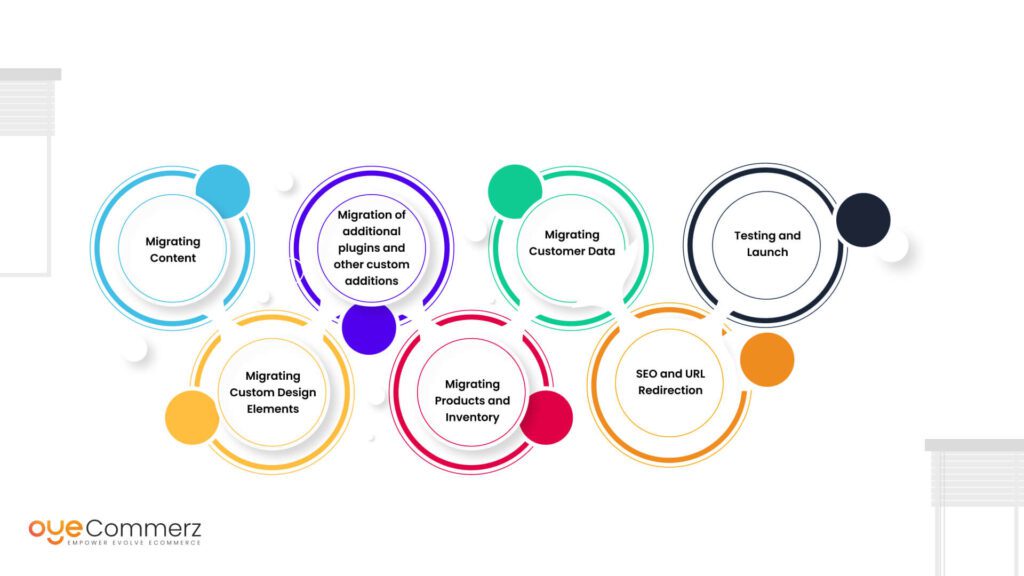Effortless Transition from WP to Shopify: A Comprehensive Roadmap for E-commerce Growth
Effortless Transition from WP to Shopify: A Comprehensive Roadmap for E-commerce Growth
Blog Article
Transitioning from WP to Shopify is an promising step in streamlining your e-commerce processes. As companies grow, choosing a platform that aligns with growth potential, UX, and flexibility is essential. Shopify is widely recognized as a favorite for e-commerce professionals, providing unmatched flexibility, security, and ease of use. In this guide, we’ll explore why this migration is a game-changer, highlight the advantages, and share actionable steps to facilitate a smooth transition.
1. Top Reasons to Transition from WordPress to Shopify
WordPress, paired with WooCommerce, has served countless e-commerce platforms. However, as companies scale, challenges like reliance on plugins, security vulnerabilities, and technical complexities can hinder growth. Shopify, specifically created for e-commerce, eliminates these concerns with an all-in-one, user-friendly solution. Statistics back this shift—Shopify hosts over 4.4 million stores worldwide, with a reported 10% boost to sales conversion rates for many businesses after migration.
2. Shopify's Perks for Thriving Online Stores
Shopify’s robust ecosystem caters for scaling businesses. Its standout features are:
- Seamless Customization: Shopify offers over 80 expertly crafted themes.
- Built-in Features: Features like Shopify Payments and integrated SEO save time and effort.
- International Expansion: Currency versatility and localization features empower brands to expand internationally.
Additionally, Shopify boasts an uptime rate of 99.98%, guaranteeing your website remains accessible.
3. Preparing for WP to Shopify Migration
Before migrating, evaluate your current store. Analyze product data, client information, and SEO performance. Tools like Shopify’s Migration Kit or external tools can simplify this process. Develop a comprehensive plan, making sure all assets—product descriptions, media files, and blog content—are optimized for transfer.
4. Data Migration: A Critical Step
Data migration forms the foundation for a successful transition. When migrating from WP to Shopify, focus on:
- Product Information: SKU, descriptions, and categories.
- Client Information: Emails, order history, and custom fields.
- SEO Optimization: Preserve meta tags, URLs, and forwarding paths to maintain search rankings.
Use tools such as LitExtension to streamline data transfer while minimizing errors.
5. Tailoring Your Shopify Store to Fit Your Brand
After the move, personalizing your Shopify store ensures it aligns with your business identity. Take advantage of Shopify’s drag-and-drop editor to create layouts with ease. Shopify's templates are mobile-responsive, ensuring a seamless UX across devices—a critical factor, given 74% of e-commerce traffic is generated by mobile users.
6. How to Protect Your SEO Rankings When Switching Platforms
SEO is vital for preserving your visibility during migration. Shopify excels in SEO with clean URL structures, preloaded features, and seamless blog integration. Ensure:
- Bulk migration to Shopify Implement 301 redirects for existing links.
- Enhance updated content with keyword-rich content.
- Leverage plugins like Plug in SEO to monitor performance post-migration.
7. Essential Tests After Migrating to Shopify
Once the migration is complete, run detailed checks.
Check: - Website speed (Shopify boasts faster speeds in contrast with WP).
- Payment integration reliability and checkout processes.
- Adaptability across devices.
Testing guarantees your store provides a seamless shopping experience from day one.
8. Real-Life Success Story
An example of effective platform switching is Gymshark, a fitness apparel brand that transitioned to Shopify. Post-migration, the company experienced a 60% boost in mobile sales and reduced site downtime. This highlights the capabilities of Shopify in driving online business success.
9. Challenges and Solutions
Migration is not without obstacles, such as data integrity and reconfiguring custom functionalities. However, Shopify’s extensive assistance and third-party experts simplify the process. Collaborating with qualified Shopify developers helps guarantee a trouble-free transition.
10. Making the Switch: The First Step Toward Success
Switching from WordPress to Shopify marks a strategic decision to online retail. By focusing on growth, streamlining operations, and enhancing the customer experience, Shopify empowers businesses to thrive in challenging industries.
Final Thoughts
Switching from WordPress to Shopify is a strategic move that can significantly boost your e-commerce success. With a well-structured strategy, the appropriate resources, and professional guidance, you can unlock new success milestones.
Excited to start the journey? Reach out today to learn how our Shopify migration services can revolutionize your online store. Get in touch today, or ask yourself: Can Shopify for small businesses your business afford to miss out on Shopify’s growth potential?
 Report this page
Report this page